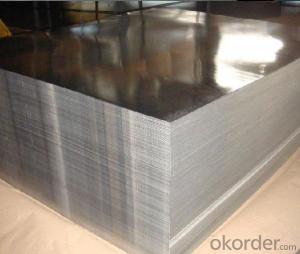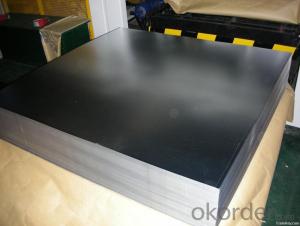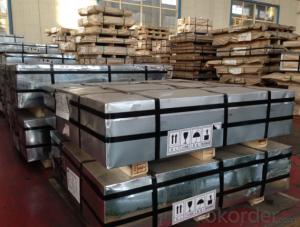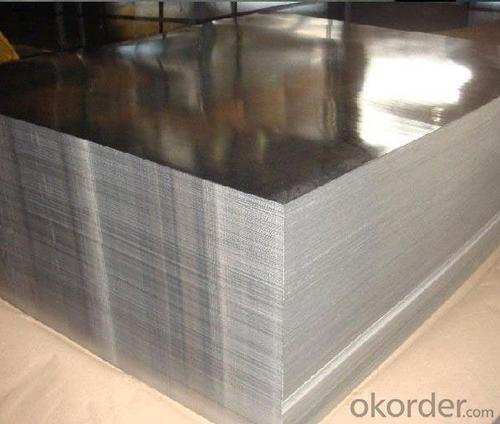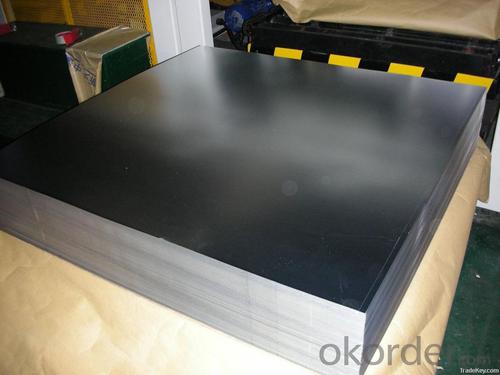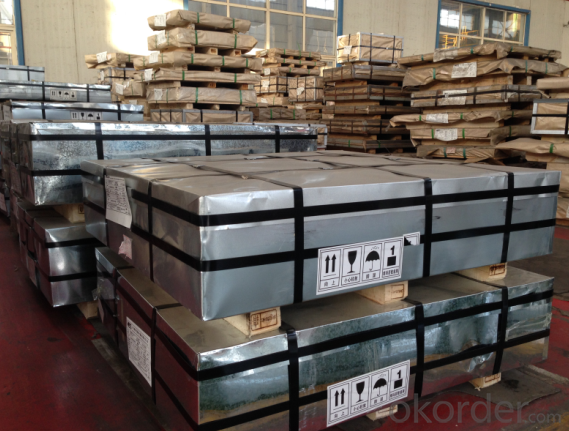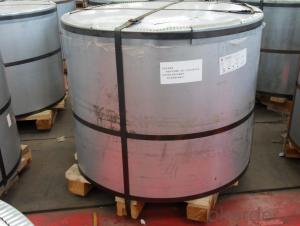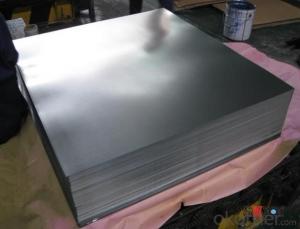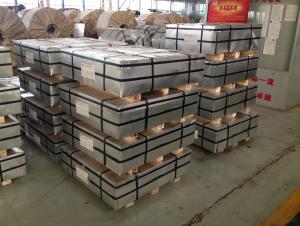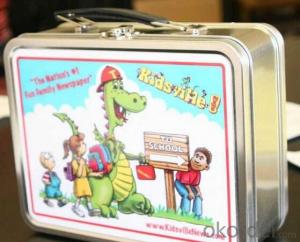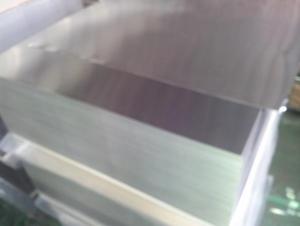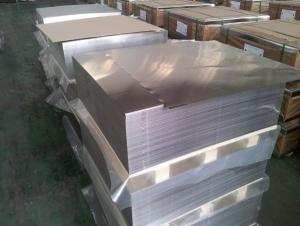Tinplate Coil / Sheet for Foods Can Packaging
- Loading Port:
- Tianjin
- Payment Terms:
- TT or LC
- Min Order Qty:
- 25 m.t
- Supply Capability:
- 7000 m.t/month
OKorder Service Pledge
OKorder Financial Service
You Might Also Like
1.Structure of Electrolytic Tin Plate Coils and Sheets for Foods Metal Packaging Description
Electrolytic Tin Plate Coils and Sheets for Foods Metal Packaging, is one thin steel sheet with a coating of tin applied by electrolytic deposition. Tinplate made by this process is essentially a sandwich in which the central core is strip steel. This core is cleaned in a pickling solution and then fed through tanks containing electrolyte, where tin is deposited on both sides. As the strip passes between high-frequency electric induction coils, it is heated so that the tin coating melts and flows to form a lustrous coat.
2.Main Features of the Electrolytic Tin Plate Coils and Sheets for Foods Metal Packaging
Tinplate, thin steel sheet with a coating of tin applied either by dipping in molten metal or by electrolytic deposition; almost all tinplate is now produced by the latter process. Tinplate made by this process is essentially a sandwich in which the central core is strip steel. This core is cleaned in a pickling solution and then fed through tanks containing electrolyte, where tin is deposited on both sides. As the strip passes between high-frequency electric induction coils, it is heated so that the tin coating melts and flows to form a lustrous coat.
3.Electrolytic Tin Plate Coils and Sheets for Foods Metal Packaging Images
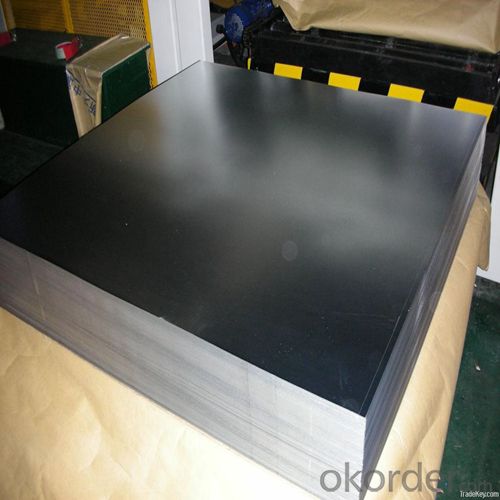
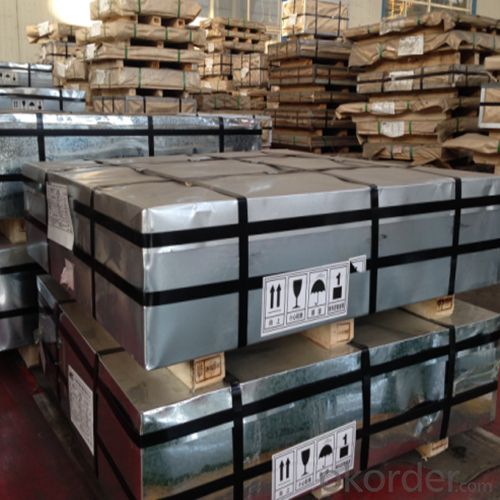
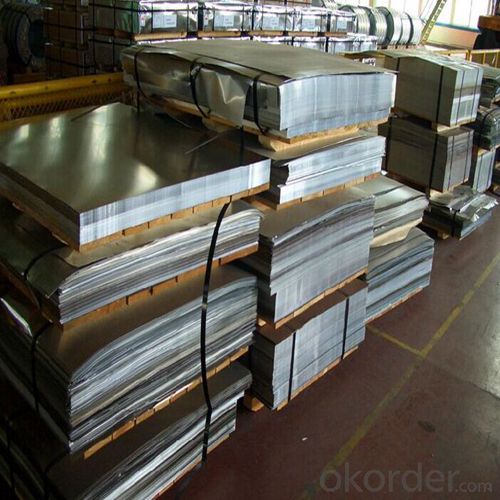
4.Electrolytic Tin Plate Coils and Sheets for Foods Metal Packaging Specification
Standard | ISO 11949 -1995, GB/T2520-2000,JIS G3303,ASTM A623, BS EN 10202
|
Material | MR,SPCC |
Thickness | 0.15mm - 0.50mm |
Width | 600mm -1150mm |
Temper | T1-T5 |
Annealing | BA & CA |
Coil Inner Diameter | 508mm |
Weight | 6-10 tons/coil 1~1.7 tons/sheets bundle |
Passivation | 311 |
Oil | DOS |
Surface | Finish,bright,stone,matte,silver |
5.FAQ of Electrolytic Tin Plate Coils and Sheets for Foods Metal Packaging
-What your tinplate material is used for ?
Tinplate is widely used for the packaging of products. Such as food cans,
beverage cans, pet cans, closures, general line cans and so on.
Printed Tinplate is offered!!
-How to place .an order or contact you ?
Please send us Email. we will give you a quick response in seconds .
- How is your quality ?
All our quality is prime even the secondary quality . We have many years experience
In this field with serious quality control standard . Advanced equipment, We welcome your visit to our factory .
- Q: What are the key properties of tinplate?
- Tinplate is characterized by its corrosion resistance, strong formability, and excellent storage stability, making it an ideal material for packaging applications.
- Q: What are the environmental impacts of tinplate production?
- Tinplate production has several environmental impacts. Firstly, the extraction of tin ore can lead to deforestation and habitat destruction. Secondly, the smelting process releases greenhouse gases, contributing to climate change. Additionally, the use of chemicals and energy during manufacturing can result in air and water pollution. Lastly, the disposal of waste materials, such as slag and wastewater, can contaminate nearby ecosystems. Overall, tinplate production has significant environmental consequences that need to be addressed and mitigated.
- Q: What are the different ways to label tinplate packaging?
- There are several different ways to label tinplate packaging, including using adhesive labels, direct printing on the tinplate, embossing or debossing the packaging, applying heat transfer labels, or using shrink sleeve labeling.
- Q: How is tinplate tested for quality and durability?
- Tinplate is tested for quality and durability through a series of methods including visual inspection, chemical analysis, thickness measurement, and corrosion resistance assessment. These tests ensure that the tinplate meets the required standards and can withstand various environmental conditions and handling processes.
- Q: How does tinplate compare to aluminum in terms of recyclability?
- Tinplate and aluminum are both highly recyclable materials. However, aluminum is often considered more recyclable than tinplate due to its higher recycling rate and energy efficiency in the recycling process. Aluminum can be recycled indefinitely without losing its properties, whereas tinplate may require some additional processing to remove the tin coating before recycling. Nonetheless, both tinplate and aluminum contribute to a sustainable circular economy when properly recycled.
- Q: Tinned iron and iron matte tin in difference
- While in tinplate iron or iron matte silver, the surface is sandy, so people often referred to as silver iron, its price is a tin material price is more expensive, generally can usually used without printing packing, for printed cans is usually to is sandy, it is generally. Iron printing, matte iron tensile and hardness of tin iron generally not good, some specifications of tinplate is not suitable for stretching relatively large.
- Q: What are the different methods of reusing tinplate packaging?
- There are several methods of reusing tinplate packaging, including repurposing it for storage or organization, using it as a decorative item or plant pot, transforming it into a DIY craft project, or donating it to organizations that can find alternative uses for it. Another option is to recycle tinplate packaging to be used in the production of new materials.
- Q: What are the main challenges in tinplate labeling?
- The main challenges in tinplate labeling include ensuring proper adhesion of labels to the smooth and sometimes oily surface of tinplate, maintaining label integrity during the packaging and transportation process, and finding solutions to prevent label damage due to moisture, heat, or other environmental factors. Additionally, accurately positioning and aligning labels on curved or irregularly shaped tinplate surfaces poses a significant challenge.
- Q: How does tinplate packaging contribute to product freshness?
- Tinplate packaging contributes to product freshness by providing a protective barrier against oxygen, moisture, and light, which are factors that can deteriorate the quality and freshness of products over time. The airtight seal created by tinplate packaging helps to prevent oxidation and moisture absorption, preserving the flavor, aroma, and texture of the product. Additionally, tinplate packaging offers excellent light-blocking properties, which helps to protect light-sensitive products from degradation. Overall, the use of tinplate packaging plays a crucial role in extending the shelf life and maintaining the freshness of various products.
- Q: Can tinplate be used for art and sculptures?
- Yes, tinplate can be used for art and sculptures. Its malleability, durability, and ability to hold intricate details make it a popular choice for creating various artistic forms. Additionally, tinplate can be easily manipulated, painted, and polished, allowing artists to explore different techniques and finishes in their creations.
Send your message to us
Tinplate Coil / Sheet for Foods Can Packaging
- Loading Port:
- Tianjin
- Payment Terms:
- TT or LC
- Min Order Qty:
- 25 m.t
- Supply Capability:
- 7000 m.t/month
OKorder Service Pledge
OKorder Financial Service
Similar products
Hot products
Hot Searches
Related keywords
